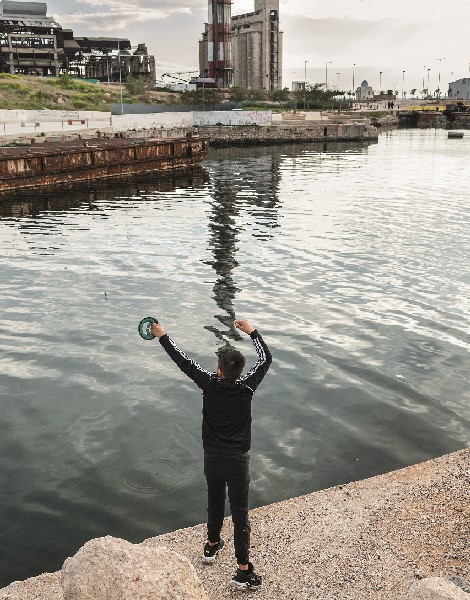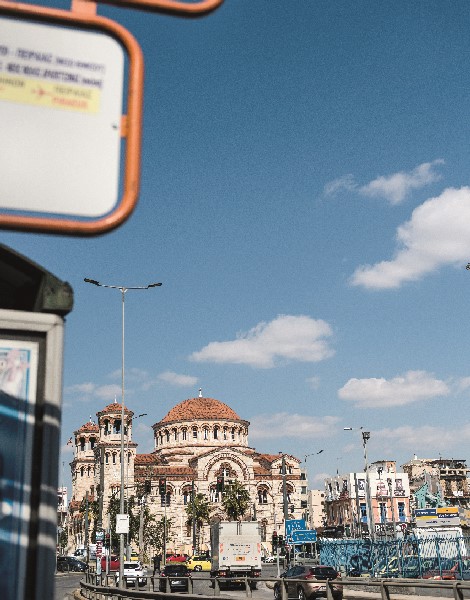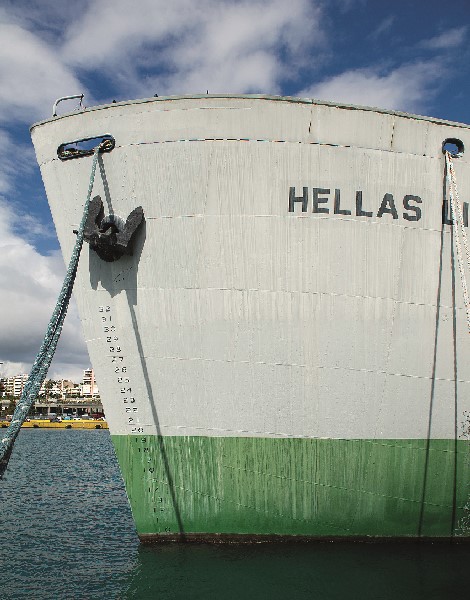Three Must-Try Souvlaki in Piraeus
In Drapetsona and Keratsini, family-run kebab...

Lipasmata Park brings an air of renewal to Drapetsona, welcoming visitors from all over Attica. In the summer, it hosts the Festival at the Sea, featuring theatrical performances and concerts.
© Vangelis Zavos
West of Piraeus, on the border between Nikaia and Perama, stretches the joint municipality of Keratsini-Drapetsona. Even though it’s neither small in size nor lacking in history, it’s completely unknown to many Athenians. It’s puzzling why this is, and why people might be more familiar with some of the area’s place names (the Tampouria, for instance, named for the temporary fortifications built there in the early 19th century) than for what exists there now: its architecture, its hotspots and its people.
Drapetsona and Keratsini form a miniature city with its own singular character; it has something of the air of the large port, but it’s almost entirely working class, without the bourgeois flair of Piraeus.

The port of Keratsini: this area has great historical significance because the Battle of Electricity, a firefight between resistance forces and the retreating German army, which was destroying everything as it withdrew, was fought here in 1944 to save the power station that produced electricity for Athens, Piraeus and other areas of Attica.
© Vangelis Zavos
There are no broad avenues, no marinas with sailboats and no neoclassical mansions here. The urban fabric turns inward here, with dozens of narrow streets framed by an erratic architectural blend of multi-storied, newly-constructed structures next to whitewashed one-bedroom houses less than two meters in height.
Parking lots crowded with cars abut narrow yards filled with cats. Mopeds and three-wheeled vehicles dart up and down the streets, the former at 80 kilometers an hour and the latter at a more sedate pace. The sounds here, too, offer interesting contrasts. The deep roar of passing motorcycles clashes with the banter you hear from the seafood stalls as you head to the kiosk to buy a newspaper.
At 05:30, you’ll spot young men heading to work at the Salamis Naval Base; at 17:30, you’ll hear pensioners commenting on neighborhood gossip from their balconies. Walk into a shop and start chatting with the saleswoman, and chances are you’ll find out that, as the wife of a mariner, she’s traveled all over Asia.
If you’re invited to a home, you’ll likely find men who can speak some Chinese, Korean or Japanese, a skill they picked up as sailors. Ocean travel for the residents of Drapetsona and Keratsini isn’t particularly exotic; instead, it’s a career experience that goes back generations.

Jogging with the unusual urban setting of Lipasmata Park in the background: industrial facilities, a chimney and a small blue and white chapel.
© Vangelis Zavos

© Vangelis Zavos
Largely refugee towns that welcomed some of the displaced populations from Asia Minor, Keratsini and Drapetsona have preserved some of that refugee architecture. Head to Deligianni Street and the surrounding alleys on Kyprou Square in Keratsini, for a look at some refugee houses that have – surprisingly enough – survived the ravages of a century.
Narrow streets flanked by low houses standing tight one against the other form a densely inhabited galaxy from the past, yet one that is still living and breathing, as these houses are still occupied.
Refugees are a part of this area’s historic mosaic, but there is much more. It was in Keratsini that the war hero Georgios Karaiskakis fought with Reşid Mehmed Pasha, which explains why the big church below Salaminos Avenue is called Aghios Georgios (built next to the much smaller chapel of Aghios Nikolaos where, it’s said, Karaiskakis himself laid the cornerstone).
On the outer walls of Aghios Georgios, a section of the stone tampouria (or fortifications) that have given this area its name survive, evidence that, before becoming a rather peaceful neighborhood, this place was a revolutionary center and a battlefield.

© Vangelis Zavos

Anastasi Cemetery, in Keratsini, looks like a small outdoor sculpture museum.
© Vangelis Zavos
In the old cemetery of Anastasi in Keratsini (it has now been replaced by an active cemetery in Schistos), military tombs of soldiers from England, Scotland, Russia and France stand alongside monumental burial structures of the former aristocratic families of Piraeus; these iconic structures look like ancient Greek temples, with pediments, columns and Ionic capitals. While Anastasi may not be as grand as Athens’ First Cemetery, it is an attractive little sculpture garden in its own right.
The most well-known grave in the area, however, is located outside the cemetery walls, by the sea; they say that it belonged to the great Athenian who played a crucial part in the Greek naval victory at the Battle of Salamis. While archaeologists have not yet confirmed this, there is a distinct possibility that the burial site of the great Athenian statesman and general Themistokles is, indeed, located in the coastal industrial area of Keratsini-Drapetsona.
Relatively nearby, on the border dividing Drapetsona from Piraeus, we find the “Hellas Liberty,” a ship that’s been transformed into a floating museum. It’s well worth a visit, not only for the exhibits it houses but even more so for the ship itself – it is one of the few surviving Liberty class ships in the world, out of the thousands constructed in America during WWII as lightly armed cargo vessels.

The playing field in Drapetsona, in front of the sea, where young soccer players dream of a great future.
© Vangelis Zavos
So far, so good regarding connections with the past, but the western suburbs of Piraeus are not focused solely on yesterday; they are firmly connected to the present day as well.
Selepitsari Park, located in a former quarry on the borders of Keratsini and Nikaia, is one of the most popular green spaces in the area. Locals visit here every day to walk by the lake, jog along the footpaths, do yoga on the grass or watch a movie under the stars during the summer months at the Alekos Chrysostomidis open-air movie theater. If you’ve never watched a film projected onto a screen with jutting rocks and the dark night sky as a backdrop, this is your opportunity – it’s very different from those traditionally urban open-air cinemas tucked in between apartment buildings with balconies bedecked with drying laundry.

© Vangelis Zavos

At Giorgos’ ouzerie at the port of Keratsini, the owner's admiration for the legendary singer Stelios Kazantizidis is evident.
© Vangelis Zavos
The greatest pride of the area, however, must be Lipasmata Park, an enormous space that has stirred up a feeling of renewal in Drapetsona, much as the art galleries and wine bars opening in former industrial spaces did in Piraeus. In both cases, these places have become magnets for Athenians, linking Athens with Piraeus somehow, like the Long Walls did in antiquity.
Lipasmata is a seaside park located on the grounds of an old fertilizer factory, with former industrial structures standing derelict; it offers matchless views over Salamis and Psyttaleia, the Cosco container terminal in Neo Ikonio, the chimneys and old refinery tanks of Drapetsona, and the apartment buildings of Piraeus.

Walking in Lipasmata Park: as the weather warms up, the park attracts more and more people.
© Vangelis Zavos
Ideal for families, with free parking, the Lipasmata park hosts a great festival during the summer featuring theatrical performances and concerts (those who witnessed the French trip-hop band Chinese Man drive crowds wild in 2019 are very fortunate, and perhaps even more so considering that nearby Perama is thought to be the birthplace of low bap, a musical subgenre).
However, the most important thing on offer at Lipasmata is the enormous coastal promenade, which locals and visitors from all over the city use regularly. Some cycle, others skate. On weekends, if the weather is good, visitors can number in the hundreds, if not the thousands and yet, it never seems busy. The Lipasmata is an enormous welcoming embrace where there’s room for everyone.
In Drapetsona and Keratsini, family-run kebab...
Explore the tavernas of Nikaia, Moschato,...
From ancient shipwrecks to treasures of...
Whether you’ve just stepped off a...